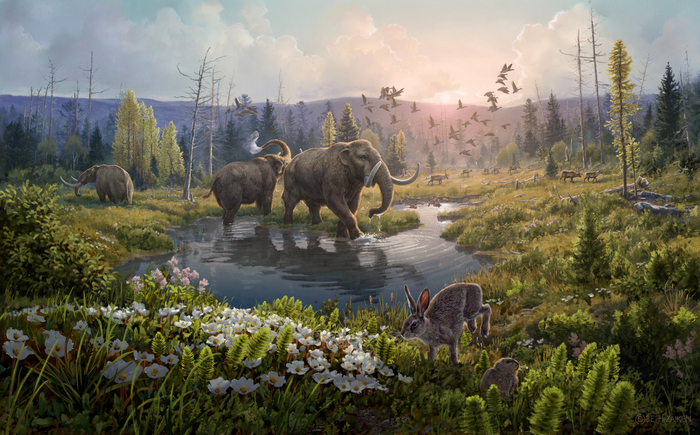Reindeer, hares and lemmings among birches and poplars, as well as microorganisms and mastodons, archaic animals of the ice age similar to squat elephants: this is the picture painted by
the most ancient DNA ever discovered: it
dates back to
2 million years ago
and was imprisoned in tiny fragments of clay and quartz.
It is a revolutionary discovery, which has made it possible to
reconstruct the entire ecosystem
that then existed in the northernmost part of
Greenland
.
The work, published in the journal Nature, is due to an international research group led by the Danish University of Copenhagen using cutting-edge technologies.
The 41 DNA samples found, which beat the previous record held by a Siberian mammoth bone by 1 million years, could help today's species better resist climate change.
But they also pave the way for the possibility of replicating the success achieved in a very different environment such as Africa, in the search for new information about early humans and their ancestors.
The clay
and
quartz
fragments
,
a few millionths of a millimeter
long , were collected in a
sediment deposit
nearly 100 meters thick, hidden in the mouth of a fjord overlooking the Arctic Ocean at the northernmost point of Greenland.
At the time,
temperatures
in this area were
between 10 and 17 degrees higher
than today.
"The ancient DNA samples were found buried deep in sediments that have accumulated over 20,000 years," says Kurt Kjær, who led the study together with Mikkel Winther Pedersen.
"The sediments were then preserved in the ice - continues Kjær - and remained undisturbed by man for two million years".
The researchers first had to establish the presence or absence of DNA in the collected samples, and then figure out how to extract it without damaging it.
Finally, every single fragment of DNA was compared with large databases containing the genetic information of today's organisms: some of the fragments were easily classified as ancestors of still existing species, while others were impossible to locate and therefore belong to organisms now extinct of which little or nothing is known.
"Some of the samples were taken in 2006, and have remained preserved ever since", says Kjær: "Only after the development of new DNA extraction and sequencing techniques were we finally able to analyze them".

